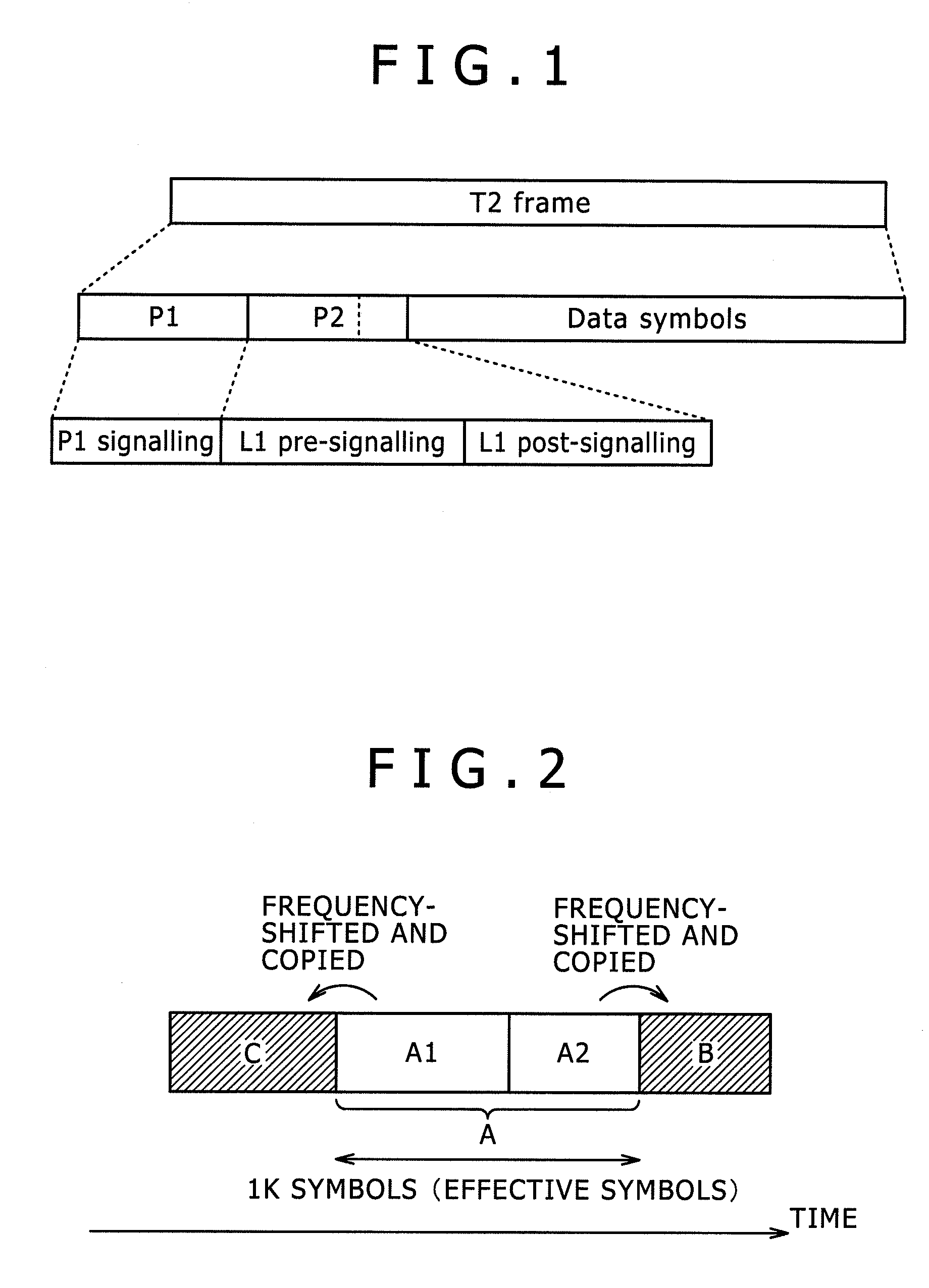Signal processing apparatus, signal processing method, and reception system
a signal processing and signal processing technology, applied in phase-modulated carrier systems, orthogonal multiplexes, amplitude demodulation, etc., can solve the problem of not being able to capture the carrier in the range of 0.5subcarrier spacing d depending, and achieve the effect of estimating the carrier shift amount quickly and requiring accuracy
- Summary
- Abstract
- Description
- Claims
- Application Information
AI Technical Summary
Benefits of technology
Problems solved by technology
Method used
Image
Examples
first embodiment
FIG. 20 is a block diagram showing a typical structure of the reception system to which the present invention is applied.
In FIG. 20, the reception system is made up of an acquisition block 101, a transmission channel decode processing block 102, and an information source decode processing block 103.
The acquisition block 101 acquires illustratively data constituting TV broadcast programs or the like in the form of OFDM-modulated signals known as OFDM signals.
Specifically, for example, Broadcasting stations and Web servers, not shown, may transmit the OFDM signal to be acquired by the acquisition block 101.
Where the OFDM signal is transmitted illustratively from broadcasting stations using terrestrial waves, satellite waves, or via CATV (Cable Television) networks, the acquisition block 101 may be composed of a tuner or an STB (Set Top Box). Where the OFDM signal is transmitted from Web servers in multicast fashion such as IPTV (Internet Protocol Television), the acquisition block 101...
second embodiment
FIG. 21 is a block diagram showing a typical structure of the reception system to which the present invention is applied.
Of the reference numerals in FIG. 21, those already used in FIG. 20 designate like or corresponding parts, and the descriptions of these parts may be omitted where redundant.
The reception system in FIG. 21 is common to its counterpart in FIG. 20 in that it includes the acquisition block 101, transmission channel decode processing block 102, and information source decode processing block 103. The difference between the two versions of the reception system is that the reception system in FIG. 21 additionally includes an output block 111.
The output block 111 is illustratively composed of a display device for displaying images and / or of speakers for outputting sounds. As such, the output block 111 outputs the images and sounds represented by the signal output from the information source decode processing block 103. In short, what the output block 111 does is to displa...
third embodiment
FIG. 22 is a block diagram showing a typical structure of the reception system to which the present invention is applied.
Of the reference numerals in FIG. 22, those already used in FIG. 20 designate like or corresponding parts, and the descriptions of these parts may be omitted where redundant.
The reception system in FIG. 22 is common to its counterpart in FIG. 20 in that it includes the acquisition block 101 and transmission channel decode processing block 102.
The difference between the two versions of the reception system is that the reception system in FIG. 22 lacks the information source decode processing block 103 but additionally includes a recording block 121.
The recording block 121 records (i.e., stores) the signal output from the transmission channel decode processing block 102 (such as TS packets of MPEG transport streams) to recording (i.e., storage) media including optical disks, hard disks (magnetic disks), and flash memories.
The above-outlined reception system in FIG. ...
PUM
 Login to View More
Login to View More Abstract
Description
Claims
Application Information
 Login to View More
Login to View More - R&D
- Intellectual Property
- Life Sciences
- Materials
- Tech Scout
- Unparalleled Data Quality
- Higher Quality Content
- 60% Fewer Hallucinations
Browse by: Latest US Patents, China's latest patents, Technical Efficacy Thesaurus, Application Domain, Technology Topic, Popular Technical Reports.
© 2025 PatSnap. All rights reserved.Legal|Privacy policy|Modern Slavery Act Transparency Statement|Sitemap|About US| Contact US: help@patsnap.com



